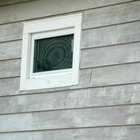
To accommodate children with disabilities, the Americans with Disabilities Act has certain guidelines in place which apply to both privately-operated and government-operated child care centers. The ADA's Title II was developed to ensure that all state and local government facilities have adequate accessibility, so they must be constructed in accordance with certain standards in mind. The ADA's Title III section relates to the design of public accommodations and private business facilities. Both Titles II and III were created to ensure that children with disabilities and their parents, guardians, families and caretakers are treated fairly by private and government-operated child care centers.
Accessibility
Child care centers and facilities are required to design their facilities so that they are accessible to all people with disabilities. For example, existing facilities must undertake physical barrier removal and make altered sections fully accessible. New centers must incorporate full access design. Day care centers and child care facilities must also include adequate aids to use for communication, as long as those modifications do not create an unreasonable burden. Specifications must be based on dimensions that can be used by a child aged 12 or younger.
Construction and Design
According to Section 35.151 of 28 CFR Part 35 of ADA Title III, facilities created after January 26,1992 must be designed so that at least a partial area provides ready access to all individuals with disabilities. Those facilities constructed after that time must be adapted according to the access guidelines. For example, wheelchair accessibility is a common adaptability requirement. Child care facilities must adhere to all of these basic standards.
Child Size Specifics
The Architectural and Transportation Barriers Compliance Board (Access Board) issued additional guidelines for structures designed with children aged 12 or younger in mind. The Department of Justice and the Department of Transportation established alternate building specification guidelines that apply to new and altered child care facilities. The rules also specify that all new guidelines conform with the child care facility standards.
Path of Travel
Paragraph (4) of Section 35.151 pertains to ensuring access to paths of travel in areas with telephones, restrooms, drinking fountains, eating areas, conference rooms and other public activity places. With respect to children under age 12, accessibility adaptations include features like grab bars in bathroom facilities. Rooms and spaces intended for younger children primarily are designed specifically according to their physical dimensions and altered as necessary for children with disabilities.
Exceptions
Unless structural impracticability can be proven, all ADA requirements apply to all portions of every facility that could be made accessible. For example, a unique physical characterization that prevents putting in a ramp could qualify as a structural impracticability.
Related Articles

New Salon Design Regulations in ...

How to Start an Adult Day Care Center ...

Indiana Child Daycare Laws

State of Ohio Home Based Child Care ...

Technology Used in Day Care Centers

How to Get Rental Assistance for Seniors

Qualifications to Enter a State-Run ...

How to Get Senior Low Income Housing ...

Pennsylvania Grants for Adopted Children

Requirements for Window Replacement in ...

Preschool Teacher Requirements in ...

How to Obtain a Child Care License in ...

What Is Transitional Housing?

How to Open a Daycare Center in ...

List of Charitable Organizations in Ohio

Health & Safety Policy for Child Care ...

Faith-Based Grants for Starting a New ...

How to Start an After School Program in ...

Grants for Christian Counselors

Requirements for In-Home Daycare in ...
Writer Bio
Susan S. Davis is a member of the Society of Professional Journalists and the L.A. Press Club. She was managing editor of "The Hosting News" and a columnist at Online Dating Magazine. Davis attended Chicago's Medill School of Journalism, and holds an A.A.S. in radio broadcasting from Minnesota Business College and a certificate in paralegal studies from University of California, Los Angeles.
Photo Credits
Goodshoot/Goodshoot/Getty Images